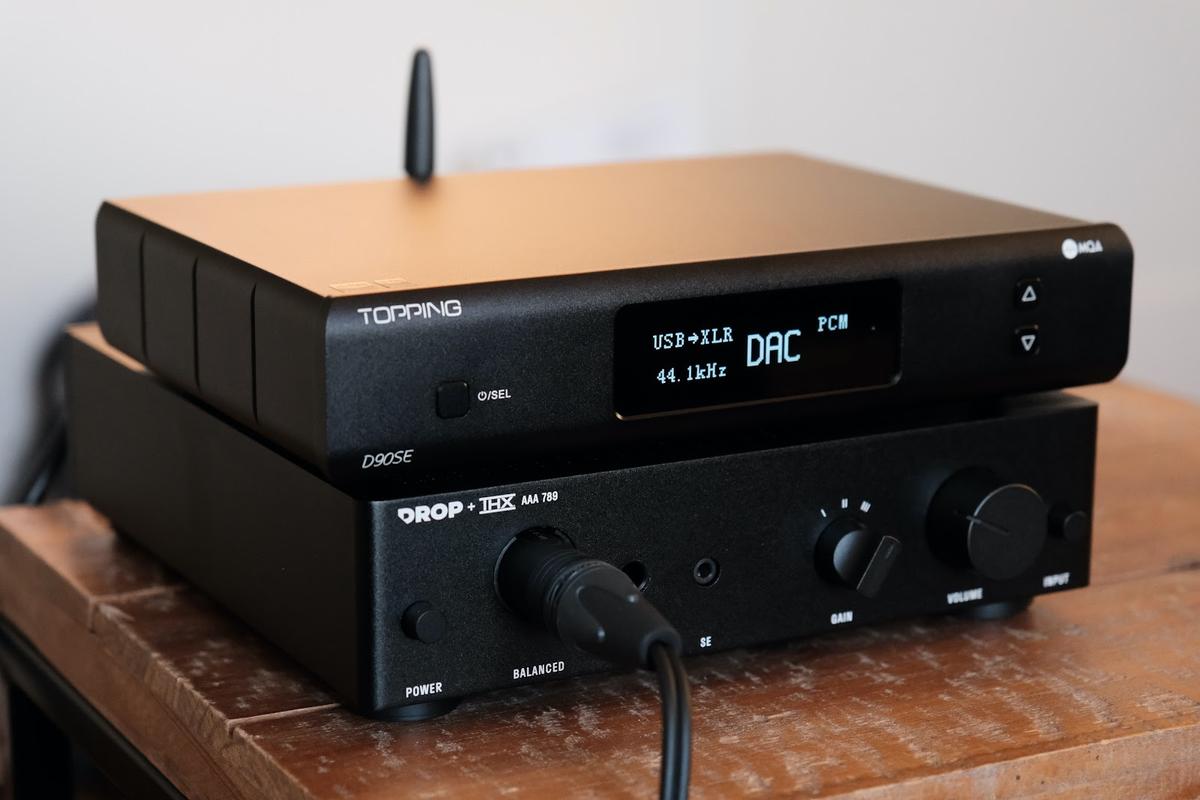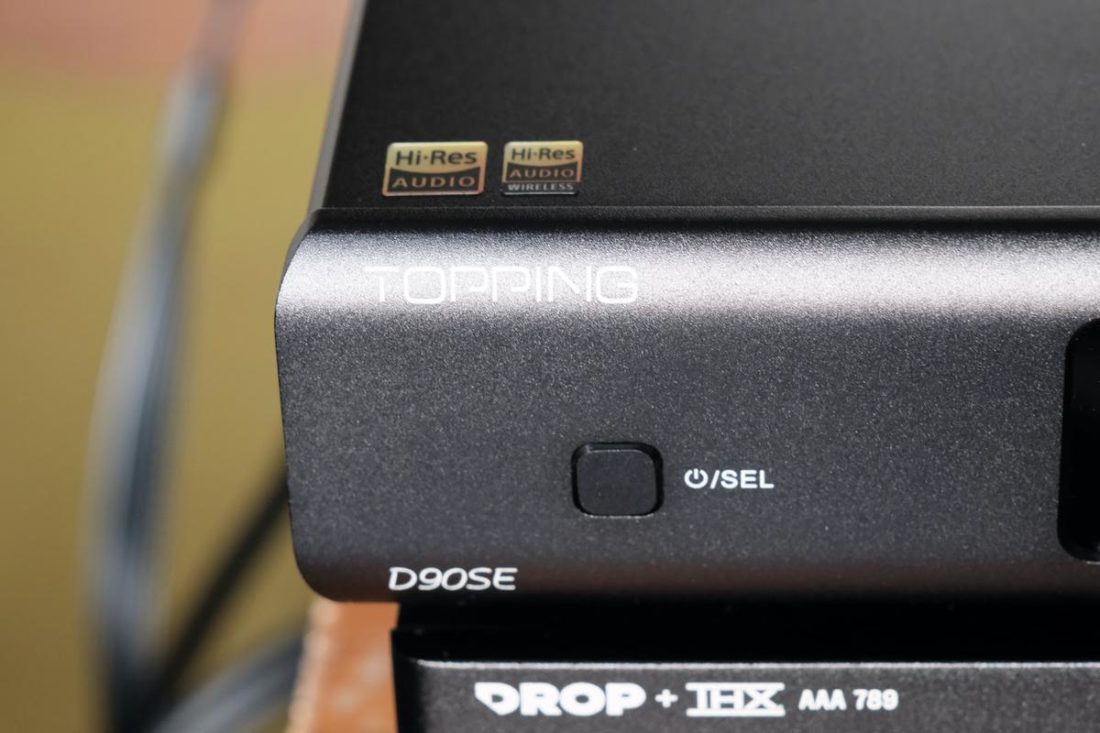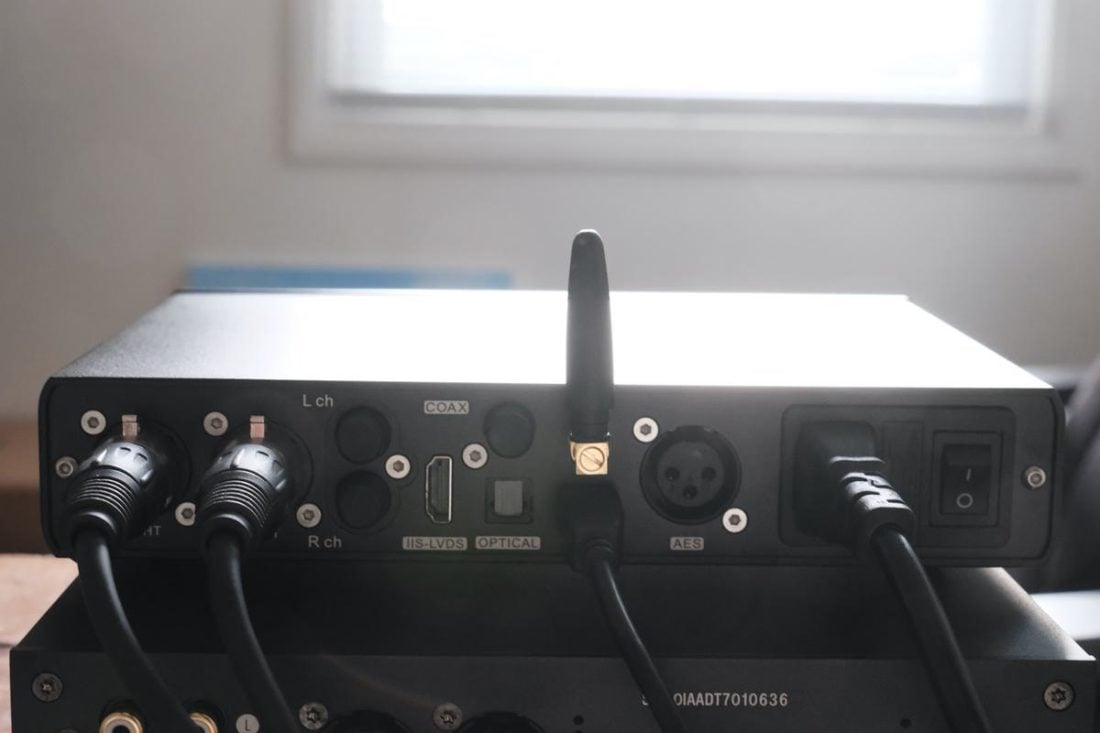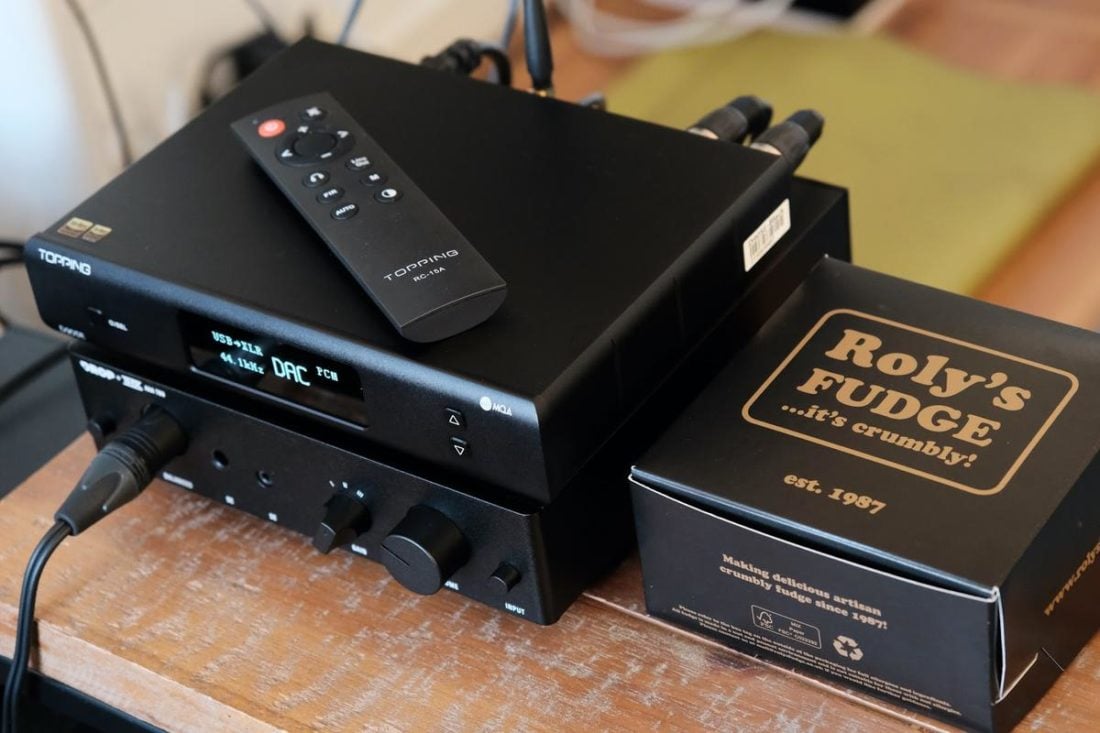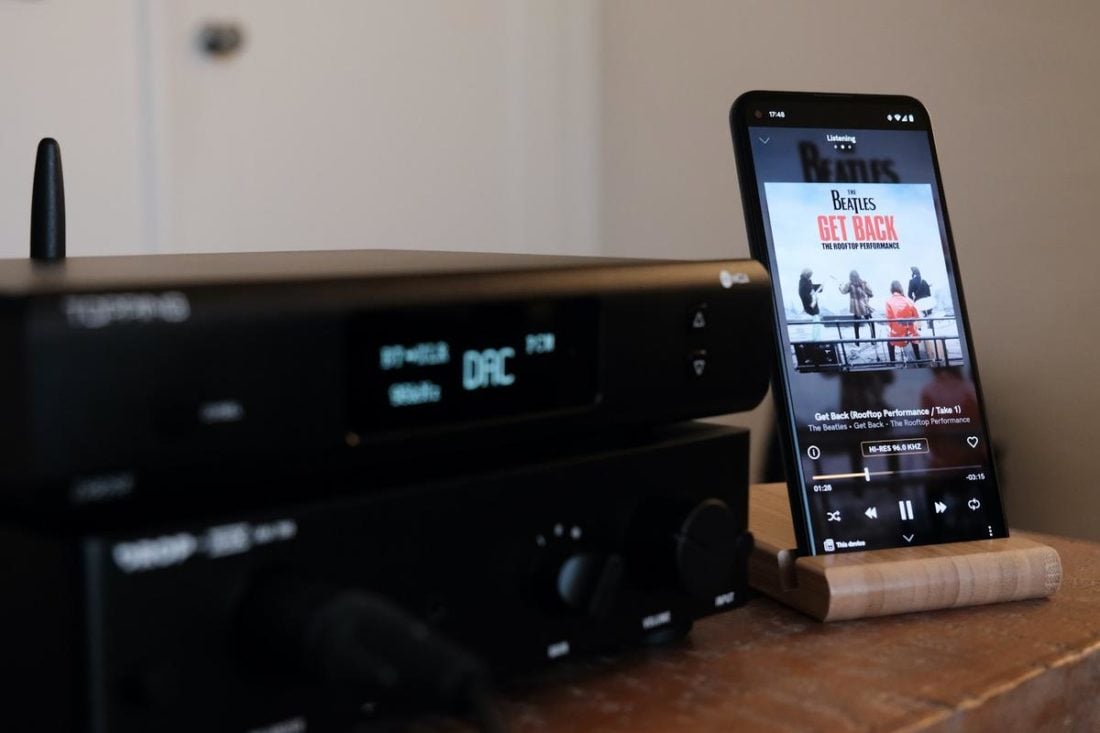Once you’ve embraced the digital audio lifestyle, whether fed by streaming services, digital files, or even good old CDs, there’s one component that helps to shape the listening experience. The DAC takes on the critical role of turning all those ones and zeroes back into a pure analog signal we can enjoy. It’s a big responsibility, taking on the challenges of timing and distortion to produce the final signal that makes or breaks the sound. The Topping D90 came along at the end of 2019, and quickly won the hearts of many reviewers. Taking the flagship position in the Topping lineup, the DAC stood out from the crowd with a neutral sound signature and exceptionally good measurements, particularly on distortion. Sadly the original D90’s tenure ended too soon due to a fire at the AKM manufacturing plant that produced its DAC chip. They say every cloud has a silver lining. Refusing to be beaten, Topping went back to the drawing board and set to work on a successor, based around a new MQA-capable ESS DAC chip. The result is the D90SE, which debuted in the middle of 2021. Will this new version be able to live up to its predecessor? Early indications looked promising, and I was excited to try the flagship, having already reviewed the highly impressive D30 Pro (and its sibling amp, the A30 Pro) last year.
Technical Specifications
Form: Desktop DAC Frequency Response: 20Hz-40kHz PCM Decoding: 32Bit/768kHz (USB), 24Bit/192kHz (COAX/Optical/AES) DSD Decoding: DSD512 (Native over USB), DSD64 (DoP over COAX/Optical) MQA Decoding: Renderer, MQA and MQA Studio Bluetooth: Version 5.0, AAC / SBC / APTX / APTX LL / APTX HD / LDAC
Inputs: USB-B, Optical, COAX, IIS, AES, Bluetooth Outputs: 3 pin XLR Balanced, RCA Single Ended
Dimensions: 22.2x16x4.5cm Weight: 1.07Kg Remote Control: Included
Packaging
Topping has done a fine job of conveying the premium nature of the D90SE with its packaging. The unit comes in a substantial black box, and lifting the lid reveals a good quantity of expanded foam surrounding the unit, its remote, and accessories. Nothing too exciting or surprising here, but the DAC is well protected for its journey to its owner.
In the box
The D90SE USB Type A to type B adapter cable Detachable Bluetooth antenna Power cord User Manual Warranty card
Design
The first thing you notice on removing the D90SE from its packaging is the heft. Relative to its size, the DAC certainly feels substantial, coming in at over 1Kg (2.35lbs). The switching-mode power supply is internal, which will certainly contribute to some of that weight, along with the all metal construction. The design skews toward the functional, and manages to be both elegant and understated. There are no remarkable design touches here, but everything about the D90SE conveys quality. Buttons are pleasingly clicky, and the substantial feet on the unit ensure it stays put when the buttons are pressed. Front and center is a large, bright, and crisp LED display that shows everything you might want to know. Obviously there’s the digital mode and sampling frequency, and what I especially like is the clear indication of which input and output are in use. There’s also an indicator to show the output volume if using the DAC with its optional pre-amplifier mode. I’m not so much of a fan of the settings menu on the Topping DACs. As with the D30 Pro I reviewed previously, the settings are accessed by holding a button when the unit first starts up. It works, but there’s no way to change most settings in normal operation, so a restart is required. Most owners won’t change settings often, but if you do, you might not appreciate this aspect of the design. The included remote is all plastic, and doesn’t match the premium feel as the DAC itself, however it does have great clicky buttons and can be used to easily switch between digital filters. There’s also a volume control on the remote, as well as the DAC itself, if using the pre-amplifier.
Interfaces
When it comes to inputs and outputs, Topping has provided just about every option you might wish for, and the D90SE scores highly here. All the usual options are here: USB, optical, and coax, but the list doesn’t stop there. This unit also contains a Bluetooth 5.0 receiver, able to support the best available codecs for that medium, including LDAC and apt-X HD. Then there are AES inputs, a professional grade two-channel digital input. This standard, developed in the 1980s, enables a stereo digital signal to be sent over a single, shielded cable. Finally, Topping included an IIS (I2S) interface. Another standard from the early days of digital audio, IIS is a pure digital audio signal, without some of the overhead used by other more common interfaces. Things are more straightforward on the output side, with the option of RCA or XLR jacks. Both of these open up the potential to use the DAC as a pre-amplifier, directly connecting to active speakers or even power amplifiers. Output goes from a typical 2.1V over RCA to as high as 5.2V over XLR.
Internals
As mentioned at the outset, Topping re-architected the D90SE around a new ESS ES9038 PRO 8 channel DAC chip. This flagship ESS chip, which appears elsewhere in Topping’s lineup, has been used to its full potential in this new version of the old favorite. The XMOS XU-216 processor used in the D90SE supports the IIS and USB inputs, and allows for MQA decoding and unfolding of Studio MQA audio across the USB, coaxial, optical, and AES inputs. Such is the power on tap here, that the D90SE can play DSD native files of up to 1024kHz, though I’ll confess I’ve never encountered files with that high a resolution. As mentioned, although Bluetooth isn’t usually thought of as a true hi-res medium, the support for high end codecs like LDAC and APTX-HD, and the bypassing of the Bluetooth chip’s own DAC demonstrates that Topping did all they can to ensure the best possible resolution, even over this convenient wireless medium. Topping proudly boasts measurements for the D90SE in the user manual, with the standout measure being the total harmonic distortion, which comes in below 0.0005% at 1kHz over the XLR outputs! This is one clean measuring DAC! Dynamic range is also extremely impressive at almost 135dB.
Topping D90SE Sound
At this price point, and with the quality of competition at this level, it’s reasonable to expect flagship performance that could end a Hi-Fi enthusiast’s search for audio nirvana. So as I connected the D90SE to my system I had justifiably high expectations. The unit can be used in a pure DAC mode, bypassing the internal pre-amplifier, and since I don’t own active speakers, or a dedicated power amp, this is the mode I used for testing. I fed the DAC with a USB signal from my Mac Mini running Roon, and then used XLR connectors to hook the D90SE up to a Drop THX AAA 789 headphone amp. As well as testing the USB input, I also tried the Bluetooth option, connecting an Android phone via LDAC with settings optimized for audio quality, resulting in the full 990kbps the codec is capable of. This was the best sounding Bluetooth capable DAC I’ve yet heard, when broadcasting wirelessly from my phone. There was some loss of detail and dynamics, but this was only really evident on back-to-back testing vs the USB input. Very impressive. I did also try out the various filters available on the DAC – seven altogether – but to my ears, and with the music I prefer, there was barely any detectable difference. You may have sharper ears than me, and it’s good to have options for fine tuning for the other equipment in your setup. It’s immediately obvious that Topping have again achieved something special with their flagship DAC. During extensive listening across the favorites in my library, I had to keep pulling myself back from just enjoying the music, remembering I was supposed to be listening critically for the sake of this review! The first adjectives that come to mind for this DAC are ‘resolving’ and ‘effortless’. A side-by-side comparison with my own DAC, a Chord Qutest, illustrates why the D90SE is a serious contender at the premium end of the market. Both DACs have a generally neutral character, as many would want from a device whose sole job it is to convert ones and zeroes back into music. Aside from a slightly more powerful bass delivery on the Chord, I’d happily live with either of these DACs, and that’s some statement considering the Qutest retails at around double the price! The law of diminishing returns is alive and well in the world of audio.
Bass
The characteristics of this outstanding DAC play well across the audible range. Starting with the bass, I enjoyed a delightful tightness to bass drum kicks, especially evident on electronic tracks like Deep Dive by Earth Trax, and many more like it. One of the other strengths of great bass resolution is control, by which I’m thinking of the ease with which I can follow, and enjoy a bassline. As with so much of what this DAC can do, its control over the bass, enabled me to easily relax and just enjoy the different threads on Beck’s Canceled Check. This effortless bass control came across throughout my listening.
Midrange
Mids were punchy and crisp, with the outstanding dynamic range of the D90SE clearly evident. There was none of the digital harshness that can distract on lesser DACs, enabling me to push the volume up higher than normal and really enjoy everything this unit is capable of. On well produced electronic music, like Yello’s Point album, there were smiles aplenty. The cleanness delivered by such a low noise floor made the silences that much darker, adding to the sense of separation between every element of the music.
Treble
I tend to prefer a top end that hits that sweet spot between brightness and harshness, and I’m pleased to say the D90SE hits the spot perfectly. The lack of a digital sheen to the music enabled me to forget I was listening to digital sources at all. For me, this is the holy grail for digital components. In the end, all the tech in the world is for nothing if I can’t switch off and forget about the system and simply enjoy the music. The Topping DAC nails this, for me.
Where to Buy
Conclusion
Sometimes it doesn’t hurt to have your hand forced. Topping may not have planned to start over with their flagship DAC, but they were able to go from two versions previously (with and without MQA support) to a single model. The rework around the new DAC chip has also resulted in a smooth, refined, and premium sounding DAC that’s highly competitive in its price bracket. The D90SE is highly adaptable, thanks to the plethora of inputs and outputs, and the onboard preamp, making it a great unit for someone who likes to experiment. The excellent Bluetooth sound (and I can’t quite believe I used the words ‘excellent’ and ‘Bluetooth’ adjacently) means almost no compromise when someone in the family wants to share their latest music discovery. The included sound filters will also help with gear matching, and the remote is a useful inclusion, even if it’s a less premium feeling than the DAC itself. In the end, the D90SE gets a solid recommendation, and should be on your shortlist if you’re shopping at the premium end of the DAC market.
